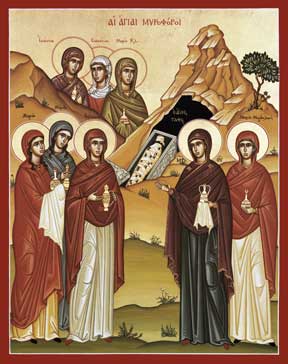One of the forgotten teachings of the Catholic Church is that we are required to attend Mass every Sunday, and that to fail to do so is to commit a grave sin. This is taught very clearly in the Catechism of the Catholic Church (# 2181). But why does the Church teach us this? Is this just ploy to get us to come to Church and to drop something in the collection plate? Well, that may be of help to the Church, but it is not the reason the obligation to attend Mass is taught. The reasons for this mandate are contained clearly in Sacred Scripture.
We begin in an obvious place, the Ten Commandments. Exodus 20:8 says it clearly enough, Remember the Sabbath Day to Keep it Holy. Every now and then, some one will say to me, “God doesn’t care if I go to Church.” I usually respond, “Well that’s strange; I wonder why God put it in the Ten Commandments?” It seems that God does care. Please understand, God does not merely ask for or wish for our presence, He commands it. Now the Church’s teaching that it is mortal sin to miss Mass comes a little more into focus.
But some claim that although Scripture mandates a day of rest, there is no requirement to attend Church. This is really not the case. The Book of Leviticus spells out the requirement to keep holy the Sabbath in the following language: Six days shall work be done; but the seventh day is a Sabbath of solemn rest and sacred assembly; you shall do no work; it is a Sabbath to the LORD. (Lev 23:3). Thus, notice how this text spells out that the Sabbath is not only for rest but for “sacred assembly.” This phrase, “sacred assembly,” is what is meant by the word “Church.” The word “Church” means “assembly.”
Further, it is clear enough that Jesus understood the 3rd Commandment to include sacred assembly. In His own observance of Sabbath, He attended the “synagogue” (another word for “assembly” or “gathering”). Scripture says Jesus attended the synagogue on the Sabbath habitually (cf Lk 4:16).
Yet another scriptural teaching on our requirement to attend Mass is contained in the admonition from Hebrews that we are must not neglect to meet together, as is the habit of some, but encourage one another (Heb 10:25).
For some to say that they don’t need to assemble, to meet together with fellow Christians in Church on Sunday (our Sabbath), is surely unbiblical. The Old Testament commanded it; Jesus attended, so who are we to fail in this regard? We must not neglect to meet together. We must not neglect to receive Holy Communion and be instructed in the Word of God.
Another biblical reason that Sunday Church worship is required of the Christian is in Jesus’ mandate that we receive Holy Communion. Jesus warns us not to miss receiving Holy Communion with these words: Unless you eat the flesh of the Son of Man and drink his blood you have no life in you. (John 6:53) Without the Holy Eucharist, which is the Body and Blood of Jesus, we are starving ourselves spiritually. If you and I were to stop eating our worldly food we would soon grow weak and eventually die; it would be a form of suicide. This is no less true of our spiritual food. If we stop receiving the Body and Blood of Jesus in Holy Communion, we grow weak and eventually die, spiritually; we “have no life in us”! Skipping Sunday Mass sets up a deadly pattern of spiritual starvation; it is a deadly thing—a mortal sin!
For all these biblically-based reasons the Church properly teaches, the faithful are obliged to participate in the Eucharist on days of obligation, unless excused for a serious reason (for example, illness, the care of infants) or dispensed by their own pastor. Those who deliberately fail in this obligation commit a grave sin. (CCC # 2181)

